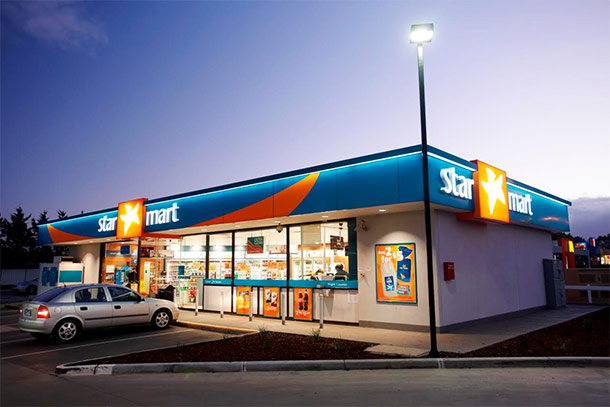Continued growth in its Marketing division – with a core strategy of driving sales of premium fuels – together with external market conditions that were favourable to its Supply Chain division, contributed to Caltex Australia’s 2014 full year net profit after tax of $493 million. The result is calculated using the company’s preferred replacement cost of sales operating profit (RCOP) basis, which excludes the impact of the fall or rise in oil prices during the period.
According to Caltex Australia, the overall result reflects a record profit in the company’s Marketing division, which includes the branding, marketing and sales of all finished products across all channels of business including the retail network and service to commercial customers such as mining, aviation, marine and agriculture.
Conditions also benefitted Caltex’s Supply Chain division, which saw record production of transport fuels at the Lytton refinery in a strong market.
With an increase of approximately 6% on 2013’s record result of $764 million, Marketing delivered an EBIT of $812 million. This result reflects a continued focus on the core Caltex strategy of driving sales of premium fuels (including Vortex Diesel) to offset the long term decline in demand for unleaded petrol, including E10. The increased penetration of premium Vortex products has been underpinned by continued investment in new retail service stations and diesel stops, and the refurbishment of existing service stations.
With earnings lost from the December 2013 divestment of Caltex’s Sydney bitumen business, acquisitions such as the Queensland Fuel Group (2013) and the Scott’s Fuel Divisions (completed June 2014) also contributed to the strong result.
In its statement to the ASX, Caltex also noted a net debt at 31 December 2014 of $639 million, reflecting working capital reductions following the closure of Kurnell and the favourable impact of lower crude oil prices. The Kurnell refinery was successfully shut down and terminal operations commenced in October, a significant milestone in the $270 million project to convert the historic refinery site to Australia’s largest fuel import terminal. The project remains on-time and on-budget with modest capex (around $50 million) remaining to be spent in 2015. The Kurnell refinery generated a 2014 operating EBIT loss of $69 million in the period prior to closure.
In August 2014, Caltex announced a company-wide cost and efficiency review designed to give the business the financial strength to maintain its market leadership position and to enable Caltex to capture future growth opportunities. This review (‘Tabula Rasa’) resulted in restructuring costs of $112 million after tax being recognised in the second half of 2014. The restructuring is expected to deliver associated benefits of approximately $80 million to $100 million (before tax) per annum, with the full annual run rate expected to be achieved in 2016. Benefits totalling approximately $15 million (before tax) have already been delivered in 2014.
A sharp decline in Brent crude oil prices towards year end was a major contributor to the stronger refiner margin in the second half as product prices did not fall as quickly as the crude price. However, the recent strength in refiner margins is not expected to persist given new supply additions in the region and the expectation is that product prices will adjust downwards.
On 1 August 2014 Caltex changed its US dollar hedging policy, and this change mitigated the impact of the falling Australian dollar on US dollar payables, with a resulting net loss in 2014 on US dollar payables of approximately $26 million (before tax). Conversely, a lower Australian dollar had a favourable impact on the Australian dollar denominated refiner margin.
Caltex’s balance sheet remains strong with net debt at 31 December 2014 of $639 million (compared with $827 million at 30 June 2014 and $742 million at 31 December 2013). The lower debt reflects lower working capital levels following the closure of the Kurnell refinery, as well as the favourable impact of the lower crude price.
As a result the Board declared a final fully franked dividend of 50 cents per share for the second half of 2014. Combined with the interim dividend of 20 cents per share for the first half, paid in October 2014, this equates to a total dividend of 70 cents per share for 2014, fully franked. This compares with a total dividend payout of 34 cents per share (fully franked) for 2013. The Board also announced that, following the successful closure of the Kurnell refinery, a target dividend payout ratio of 40-60% of RCOP NPAT would be reinstated.


